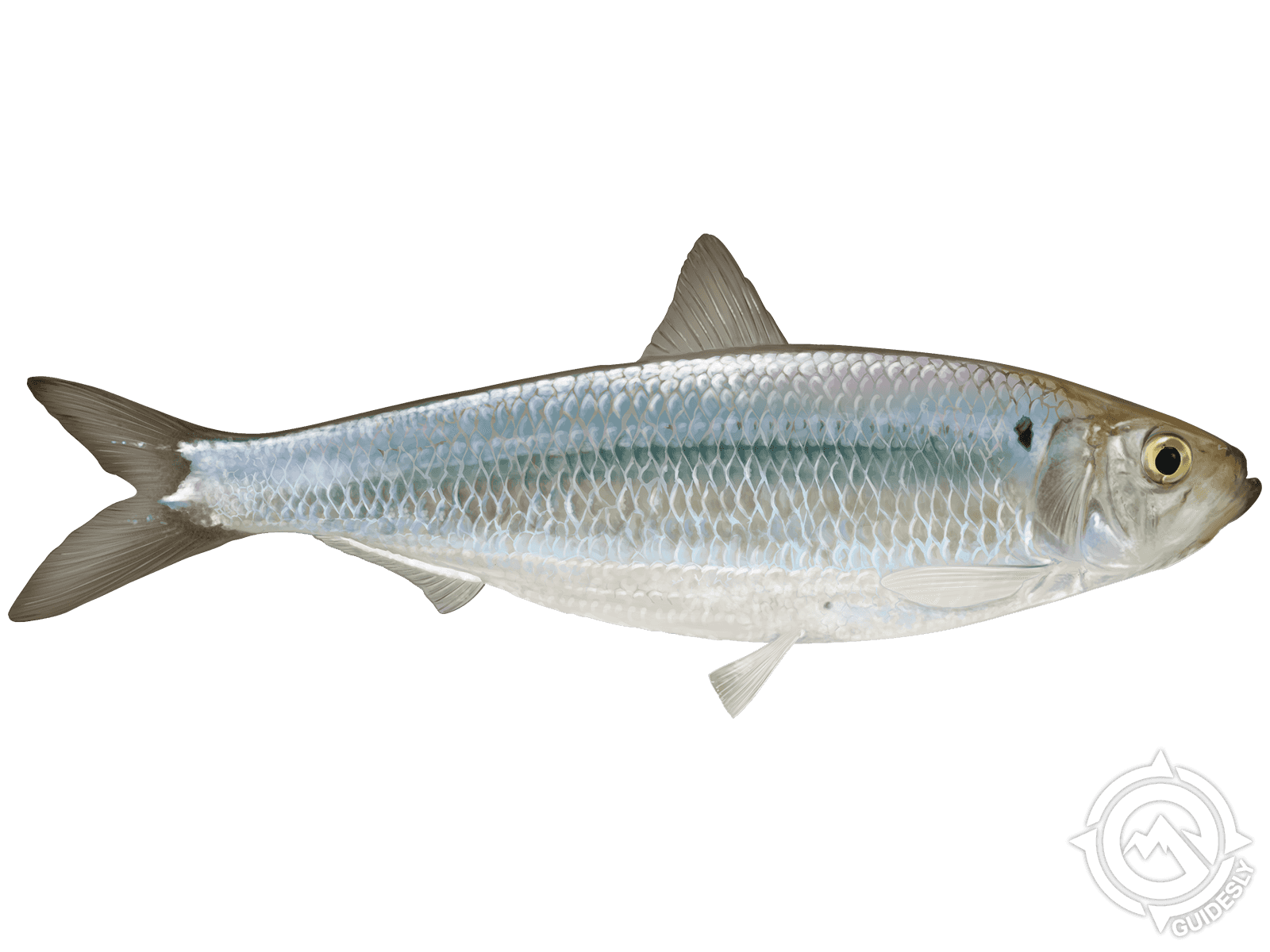Atlantic Herring

Species Details
Clupea Harengus
Clupeidae
Clupeiformes
Offshore, Nearshore
1 - 2 lbs.
8" - 18"
Atlantic Herring (Clupea harengus) Fish Description
As one of the most abundant fish in the world, the Atlantic Herring (Clupea harengus) is a popular fishing target for commercial fishers found in its namesake. It is also one of the most recognizable foodfish as it’s been widely sold fresh, canned, smoked, or pickled in markets for centuries. The Atlantic Herring played an important role in the economy of several coastal states in the US, particularly in the region of New England.
The Atlantic Herring is a small fish with a body that is mostly silver in color, except for the bluish or greenish top part. Its body is kind of shaped like a torpedo—long, streamlined, and tapers on the head and the tail. It has a round belly and the caudal fin or tail is deeply forked. Its scales are rather big for their small size, making each scale quite visible.
The spawning season usually starts in the late summer and early fall, often near our Atlantic coastlines—particularly in the Gulf of Maine. This is the time when they collect by the millions or sometimes by the billions, occupying vast parts of the water. They fertilize their eggs externally, which means that both the males and the females would simultaneously release their sperm and eggs onto the ocean bottom. Then the fertilized eggs would hatch into larvae in about seven to ten days. By springtime, the larvae would have reached their juvenile stage in which they would start schooling together.
The Atlantic Herring is a carnivore. Their diet mainly consists of zooplankton, krill, as well as other fish’s eggs and larvae. They are also known to be filter feeders by which they would just swim with their mouth wide open until they consume their food. They are, unfortunately, a target for a lot of the predators in the sea, including tunas, salmons, sharks, dolphins, killer whales, seals, sea lions, and different kinds of sea birds.
Atlantic Herring Interesting Facts
- The Atlantic Herring can only grow as much as eighteen inches long and weigh as much as a little more than two pounds.
- They are sometimes called “The Silver of the Sea” due to their color as well as their economic importance in some coastal towns.
- They are mostly active at night and tend to stay in deeper waters during the day to avoid their numerous predators.
- They can live up to twenty years in the wild—that is if they are not eaten, of course.
- Atlantic Herring is highly-sought by commercial fishers not just to be sold as food, but also for bait.
- Their meat is rich in omega-3 fatty acids and vitamin D.
- They often form schools by the millions or even billions, covering up to almost five cubic kilometers of the ocean.
- They form massive schools to “protect” themselves from their predators.
- They are sometimes called “farting fish” as they expel air from their anal duct, thus, creating “farting” noise.
Atlantic Herring Size and Swimming Speed
The Atlantic Herring doesn’t grow that big with an average size of only eight to fifteen inches. They are also not known for speed as they can only swim at an average speed of forty-three inches per second. They can however swim a bit faster while frantically escaping a predator.
Atlantic Herring Habitat and Distribution
The Atlantic Herring can be found on both sides of the northern Atlantic. In North America, they can be found from the waters of Labrador in Canada to Cape Hatteras in North Carolina, with the Gulf of Maine and Gulf of St. Lawrence being known to be fishing hotspots.
Herring are pelagic fish, which means it usually stays in the middle parts of the open sea, often in depths of thirty to three hundred feet below the surface. Although they sometimes go up the surface and can sometimes wander near the coasts, especially during spawning season.
Atlantic Herring Fishing Tips
Although they are often targeted by commercial fishers, Atlantic Herring isn’t that popular when it comes to recreational fishing. But if you’re interested in catching this fish, you will have to do it far offshore where these fish often hang around. You can catch a lot of them via trawling. If you’re going to catch them via hook and line, it may get a little frustrating as they’re known to be fussy eaters.







